
Dr Marita Bradshaw, National Rock Garden Steering Committee
Published in the National Rock Garden Newsletter No. 26, December 2023
More than half a million Australian expatriates live overseas (UN DESA, 2020) but did you know that there are also some notable ‘expat rocks’ to be found scattered across the globe?
In the Tiergarten, Berlin, you can find spectacular polished slabs of orbicular granite from Boogardie Station, near Mount Magnet, Western Australia. These beautiful Australian rocks and other outstanding geological specimens from other continents make up the Global Stones, Wolfgang Kraker von Schwarzenfeld’s project ‘for global awareness and peace, and as a monument for the future’ (http://globalstone.de/). Five pieces of the Archean orbicular granite are arranged around a large boulder of Proterozoic banded iron formation from Mount Tom Price, in the Pilbara, Western Australia to form the Peace Rocks. The arrangement is reminiscent of the petals of a flower and so mirrors the ‘crystal flowers’ that have grown within the orbicular granite.
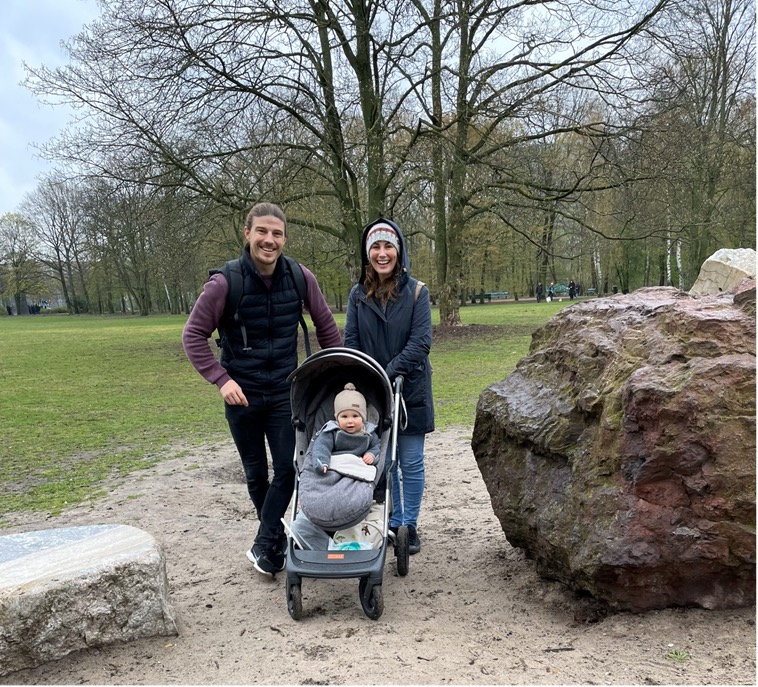
The last time these rocks from the Yilgarn and Pilbara in outback Western Australia were out in such a cold, high latitude climate was probably in the Permian Ice Age (see https://www.nationalrockgarden.com.au/featured-article/australia-under-ice/).
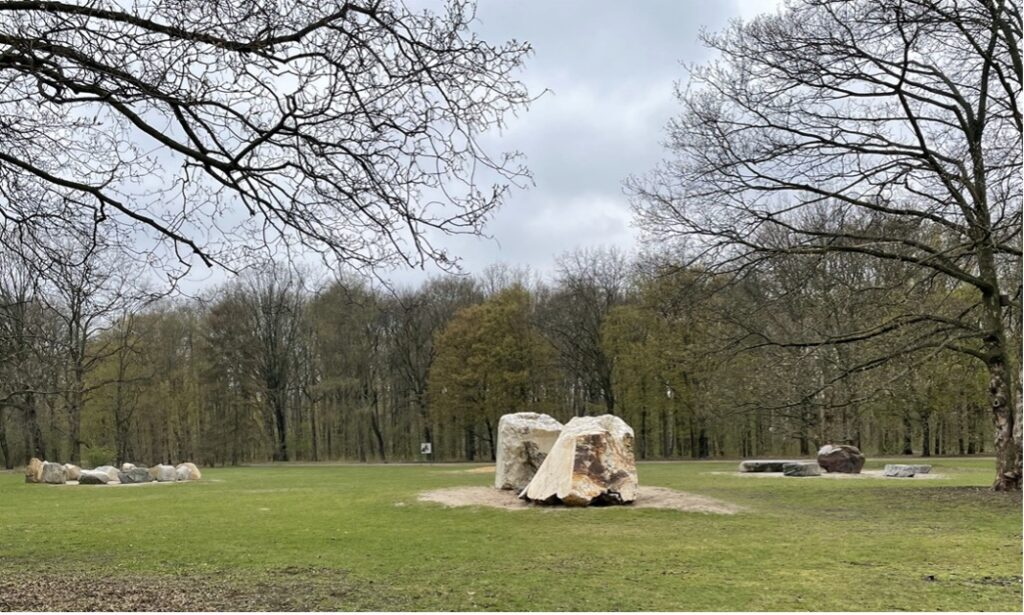
The National Rock Garden also has five large pieces of Boogardie orbicular granite that were gifted to us by Wolfgang Kraker von Schwarzenfeld. The rocks are on temporary display at Geoscience Australia, in Canberra, until such time as we are ready to place them on permanent display at the new NRG site.
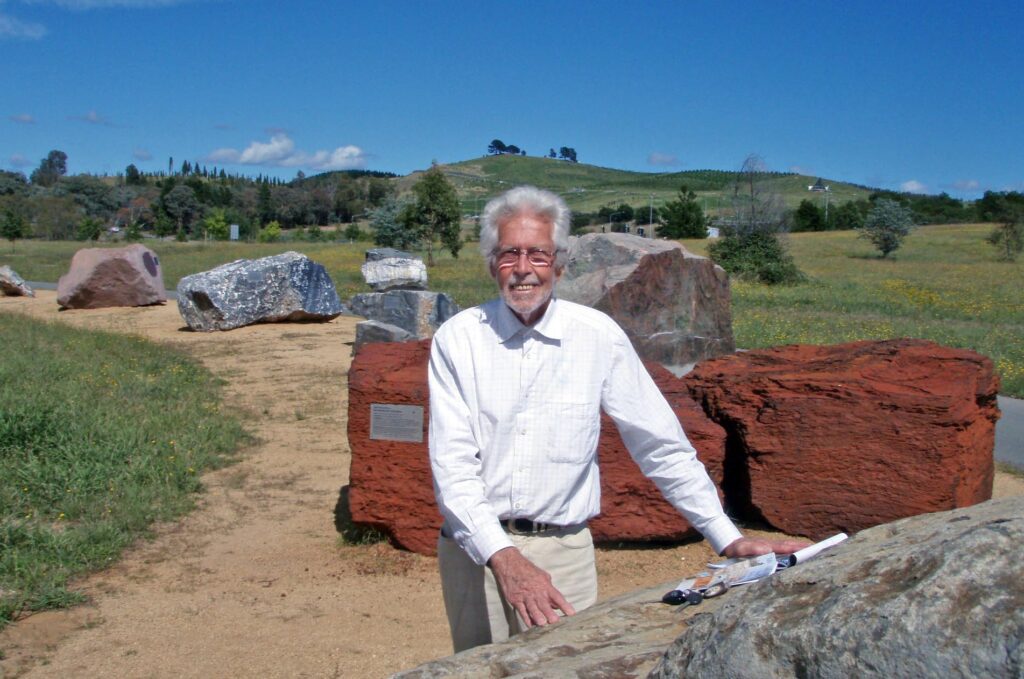
The Boogardie granite specimens display large (5 to 15 cm across) orbicules made up of concentric zones of different minerals (hornblende, biotite, plagioclase) to produce black, grey to white bands. The orbicular zones are hosted in a pink, medium-grained, late Archean granitic rock. For more information, take a look at the orbicular granite page on our website (https://www.nationalrockgarden.com.au/rock-collection/orbicular-granite/) and our article on the Mount Magnet Astro Rocks Festival (https://www.nationalrockgarden.com.au/featured-article/mount-magnet-astro-rocks-fest/).
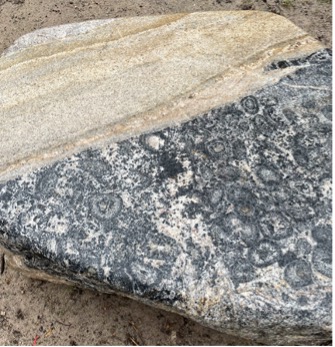
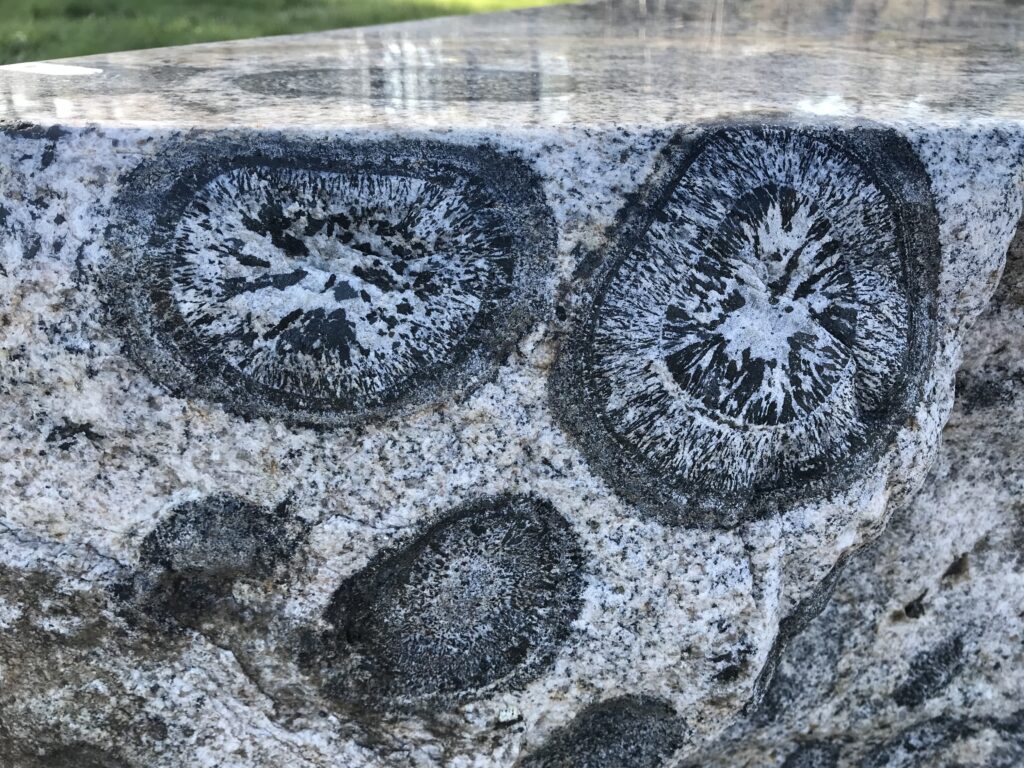
By a picturesque lake in Austria are rocks from the south-west slopes of NSW transformed into beautiful sculptures by Andreas Buisman, a great friend to the NRG. The Adelong Norite artworks are in the Seepark at St Gilgen, Austria (https://andreas-buisman.com/, https://andreas-buisman.com/seepark-st-gilgen/).
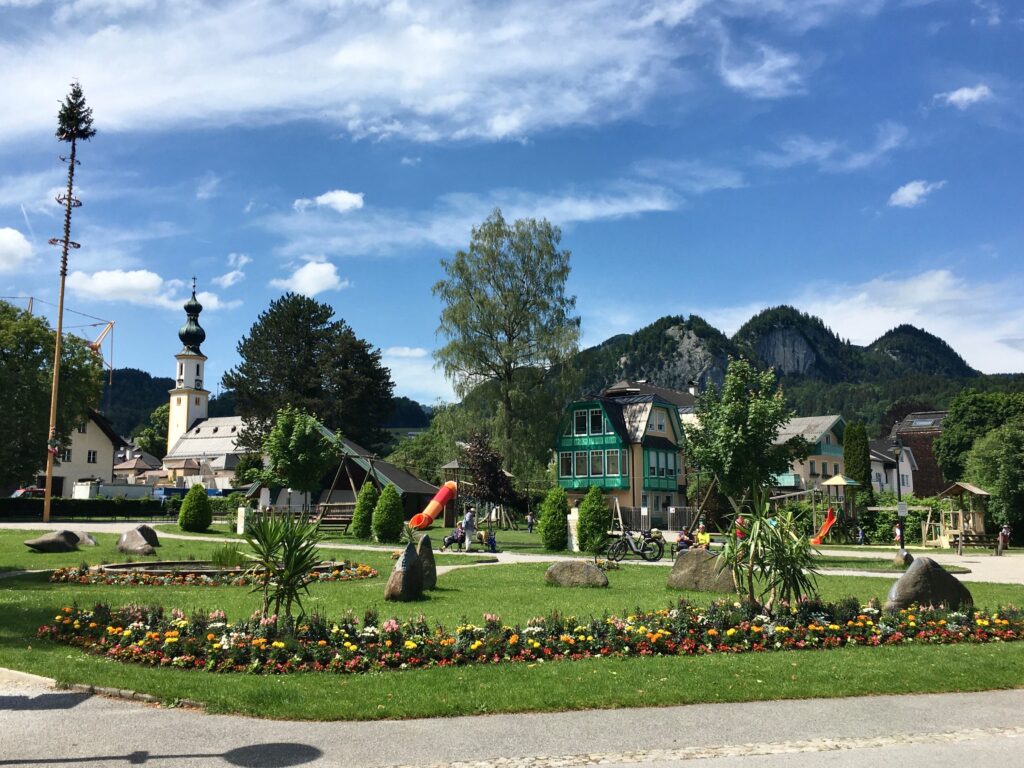
The Adelong Norite has long been favoured as a decorative stone with its rich dark polished surfaces. Andreas’s sculptures often contrast the highly polished areas with the natural weathered surface and other interestingly crafted textures. The specimen of Adelong Norite at the current NRG site in Canberra has also been sculptured by Andreas (https://www.nationalrockgarden.com.au/rock-collection/adelong-norite/).
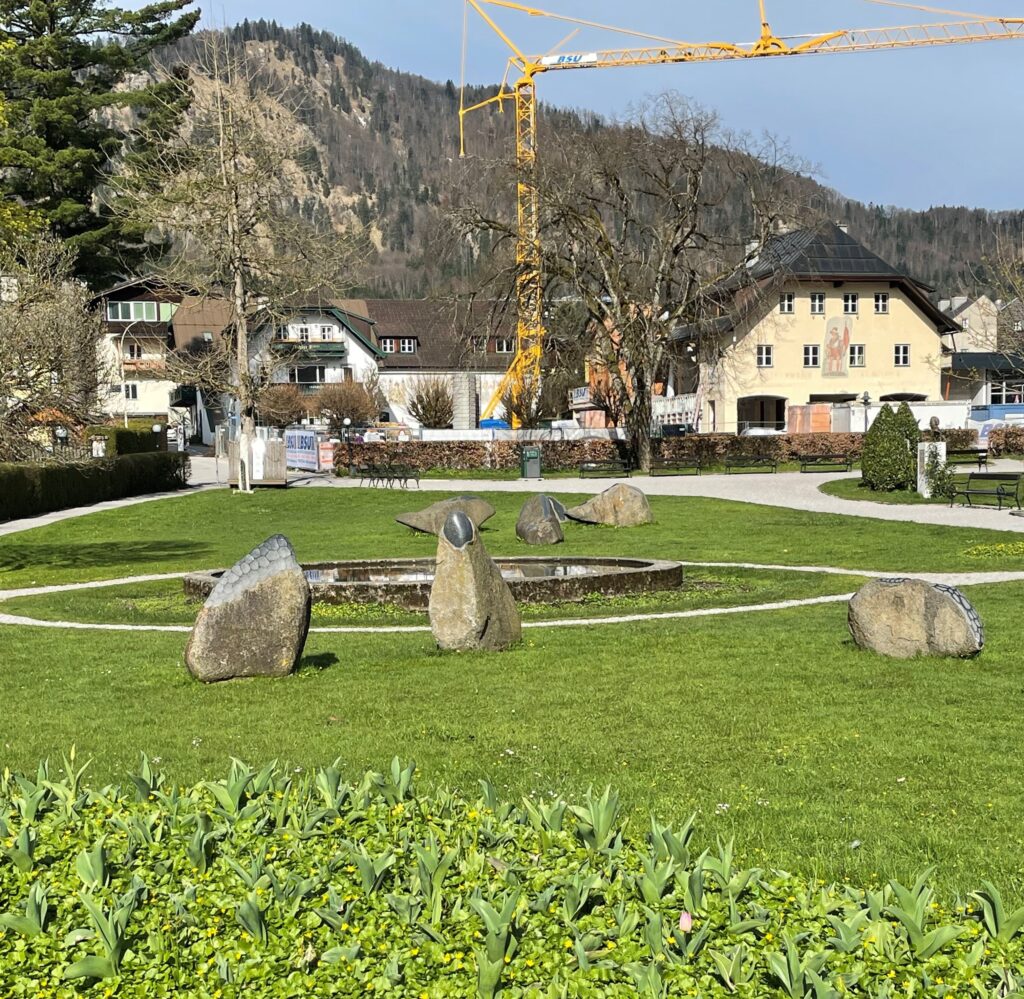
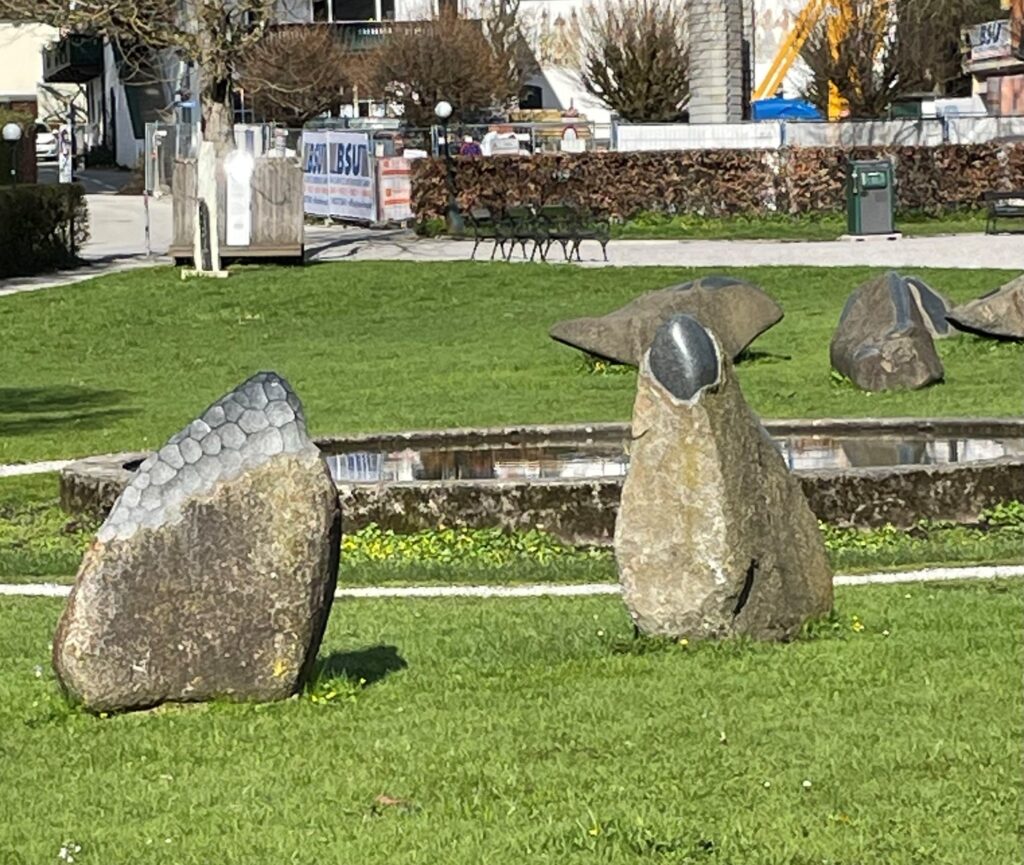
References
United Nations Department of Economic and Social Affairs, Population Division, 2020. International Migration 2020 Highlights (ST/ESA/SER.A/452). https://www.un.org/development/desa/pd/sites/www.un.org.development.desa.pd/files/undesa_pd_2020_international_migration_highlights.pdf. Last accessed 20 December 2023.


